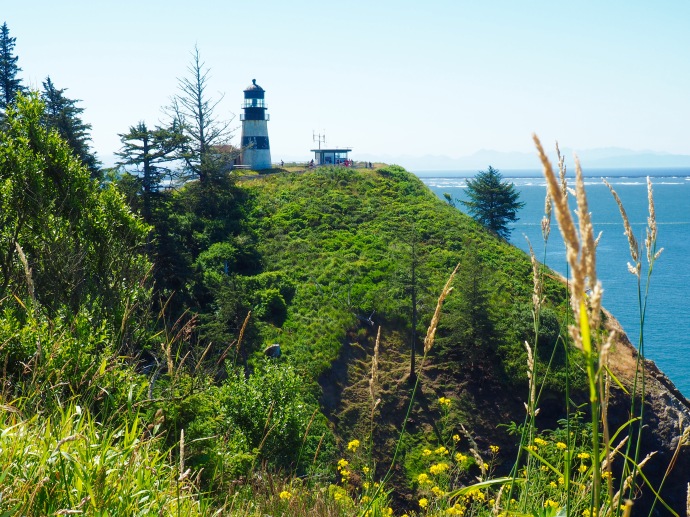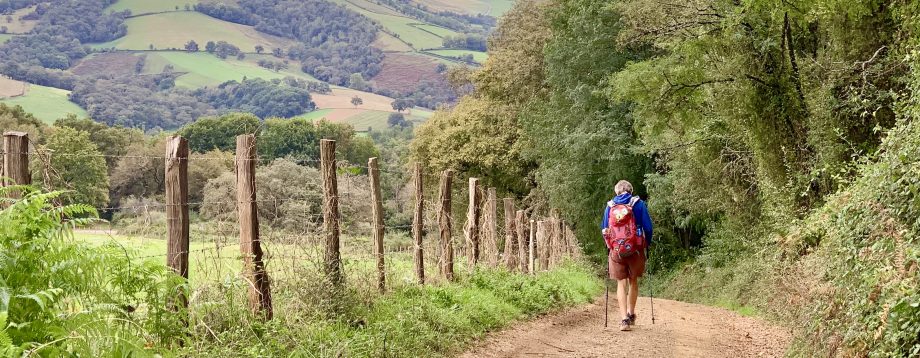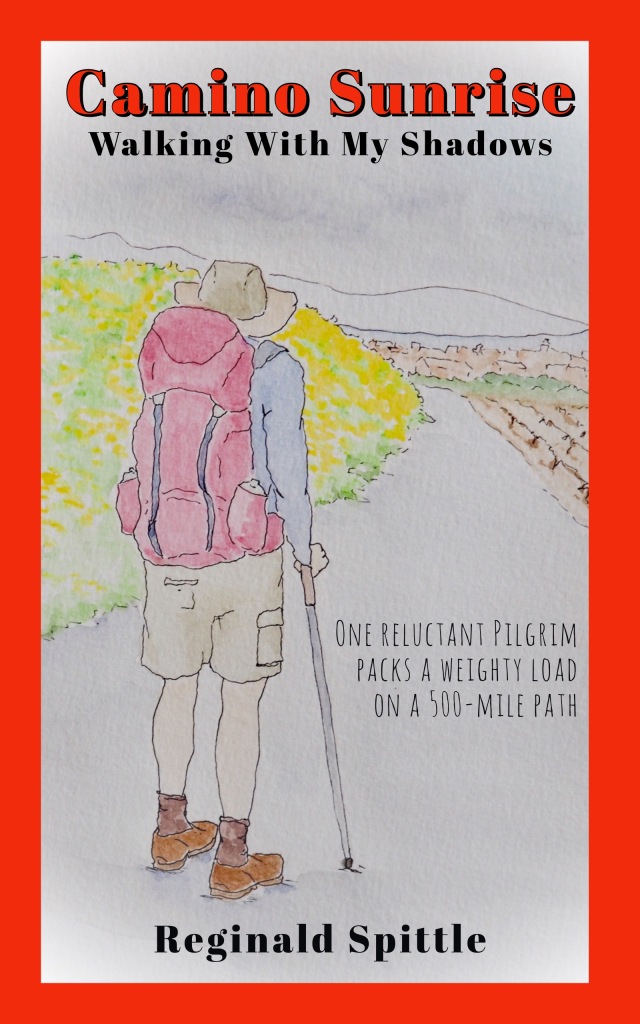
We are camped at Fort Stevens State Park and have enjoyed exploring an area known for being at the mouth of the Columbia River and the turnaround point for the Lewis and Clark Expedition.
The campground is the largest Oregon state park with more than 500 campsites. Before you wince at that number, we must tell you that the loops are arranged such that we felt like we were in quiet, small campground most of the time. We were joined by many resident mosquitoes, however, who enjoyed the swampy surroundings and lush vegetation. A dense, tall forest keeps it comfortable for them. Our campfire and a ring of defense chemicals (including Bounce sheets) kept them at bay.)
Speaking of defense, Fort Stevens was a military installation from the Civil War through World War II, with many batteries, such as the one pictured, standing by to protect the Columbia entrance.

Our son Andrew drove from his Portland home to join our expedition that included a walk to the ocean to see the 1906 wreck of the Peter Iredale, which ran aground while looking for the Columbia River mouth.



To find where Lewis and Clark first saw the Pacific in 1805, we crossed the Columbia River on a three-mile bridge from Astoria and found the Cape Disappointment Lighthouse in Washington. Our 11-mile roundtrip trek from Cape Disappointment took us through forest where William Clark and his men camped.
The cape got its name in 1788 from an English captain who could not find the Columbia River mouth. Disappointing. I’ll say!
Some nice ocean views and Waikiki Beach (east!) marked our walk. Our destination was the North Head Lighthouse, which was shrouded with scaffolding while undergoing restoration.


While looking for a place to spend the winter, Lewis and Clark canoed across the river to what is now Oregon and quickly built Fort Clatsop, part of Lewis and Clark National Park. We decided to go back by car.
We found that the Park Service had rebuilt the fort and we covered our ears while a ranger demonstrated an early 19th-century rifle firing. During her talk, she told us that a misfire was called a “flash in the pan” and the gun’s parts gave us the expression, “lock, stock, and barrel.”
The fort is also the site of some family history. We brought Andrew here when he was one year old. Actually, younger sons Brad and Chris were here too, in a much more confined state.







Looks like an interesting place. Thank you for bringing us along with you through the photos and words.
LikeLike
Thanks for joining us!
LikeLiked by 1 person
You are welcome Reg and Sue.
LikeLike
Beautiful scenery! (Just hate those darn mosquitoes!)
LikeLike
Thanks, Bonnie…very few bites, though. The Bounce sheets seem to work!
LikeLike
Love your pictures. Such a beautiful area. We visited Fort Clatsop when we went to Astoria a few years ago. Can’t wait to go camping with you and enjoy the Oregon coast. The Oregon state parks are the best. See you soon!
LikeLike
I am glad I didn’t have to hollow out my own canoe to cross the river, though!
LikeLike
Just amazing scenery!
LikeLike
All that rain is good for something isn’t it!
LikeLike
Very cool! We love this kind of stuff. A few weeks ago we visited The Lake Champlain Maritime Museum in Vermont and picked up loads of Revolutionary War era trivia. Also got a row out on the lake. We were thinking of you guys today as we visited the CA State Mining Museum at the Mariposa Fairgrounds. It was over 100 degrees F in Mariposa. Yikes!
LikeLike
Vermont to Mariposa!? Now that is an eclectic mix. We are heading back to Ashland tomorrow. Only 80s there, for now. Nice to hear from you!
LikeLike
We’ve been to Disappointment Lighthouse, but never the Fort. Looks interesting though.
LikeLiked by 1 person